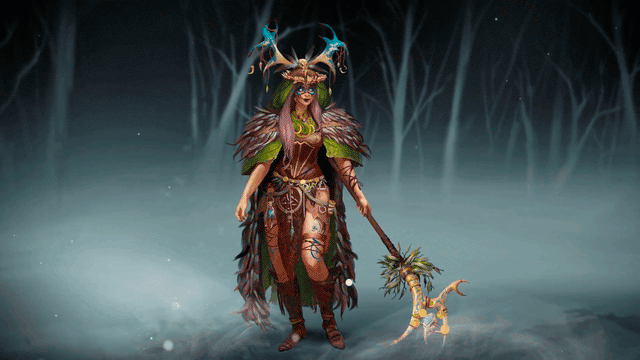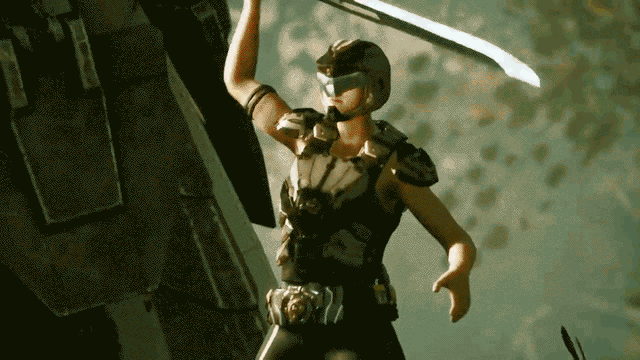2d Design Vs 3d Design
Each type of animation has its own supporters who willingly find the advantages of their favorite and the disadvantages of the opposite side. And then, when the entire Internet is full of arguments in favor of the victory of this or that type of animation.
When separation occurs.
When a contradiction is born.
When two camps collide.
It's a question of honour for us to kindle the peace pipe and say that there is no battle, which would immediately refute our own title.
What is happening and what is one to make of this? Move on and you will understand everything.
2D Animation or 3D Animation: No Confrontation or Destination Peaceful Coexistence
Competition or confrontation always adds piquancy and drive to any even the calmest comparative analysis, which was not initially aimed at identifying an imaginary winner. But the drive is felt only for the time being, or rather until the moment when the reader does not realize how subjective the reasoning of the author of the article is and how obvious his or her adherence to a particular side is, despite attempts to disguise everything as objectivity.
What we are definitely not going to do is butt heads of 2D and 3D animation adherents. We'll just talk about these two fundamental types of animation in a soft narrative form and explain why both the flat (almost like Terry Pratchett's Discworld) and volumetric worlds have equal rights to exist.
Which is Better, 2D or 3D Animation?
None is better or worse.
Each of these types of animation is self-sufficient and has its own niche in modern film, advertising and video game production. Comparing 2D and 3D animation is initially a large-scale and challenging task, since they differ in almost all aspects.
2D animation is an art style based on creating movement of objects and characters in two-dimensional space, focusing only on length and width. This movement is depicted using drawings, mainly pencil sketches, showing the change in the position of the object. They are arranged in sequence to create the illusion of fluid movement.
3D animation is an art style that deals with the creation of 3D models and their movement in the digital environment using special computer software. 3D was originally aimed only at computer processing, it never existed in the form of pencil sketches, as in the case of 2D. 3D animation requires much more attention to modeling, rigging, anatomical nuances and rendering.
Many experts and fans of the animation sphere say that the era of 2D has already passed, and soon it will be ousted from the market. Adding depth to the standard height and width is considered sufficient to substantiate such a statement. But this does not stand the test of facts: the appearance of 3D did not in any way affect the viability of 2D, from which we can conclude that this is not at all a matter of the number of dimensions.
The simplest and most visual option will be to show the differences between 2D and 3D animations in the form of a comparison table. And here it is:
| Comparison parameter | 2D animation | 3D animation |
| Time of appearance | the late 1800s | the late 1900s |
| Dimensions | length and width | length, width and depth |
| Realism level | low | high |
| Method of creation | hand-drawn (early stages) | computer-based |
| Space for creativity | boundless | limited by software capabilities |
| Learning time | rather quick | rather slow |
| Production time | rather short | rather long |
| Main focus | gameplay and story | design |
| Cost | lower compared to 3D | higher compared to 2D |
| Reusability | every project requires new drawings | the model can be used in different projects |
| Rotation capability | a separate drawing required for each viewing angle | 360 degrees |
| Application area | films, cartoons, websites, learning courses, advertising, product video, video games | films, cartoons, video games, medicine, biotechnology, aerospace |
2D Animation is Dead: Fact or Fiction
This is a rather provocative question that worries many people. The wave of doubts and disagreements started from the moment when such a giant animation studio as Disney (the founder of the style) announced the closure of its 2D department and the end of the era of hand-drawn animation. Everyone was excited about what this meant for the future of traditional animation. Will it not exist anymore?
Many modern specialists have a heart for 2D animation, but they work in 3D. When asked where this contradiction comes from, they say that 2D animation has no future. So, the opinion that 2D animation, if not dead, is at least at deaths door and nothing will save it has penetrated deep enough into the masses and a solid factual basis is needed to try to get it moving. But let's try.
The first thing we have to do is get rid of misinterpretation of terminology. 2D animation and traditional animation are two completely different concepts, although they are often used interchangeably. 2D animation is a type, it's about a direction: flat, two-dimensional animation. Traditional animation is about technique: working on an animation table using Disney's 12 principles. And 2D animation is not the only prescription in the world of traditional animation.
12 fundamental principles of animation:
- Squash and Stretch
- Anticipation
- Staging
- Straight Ahead and Pose to Pose
- Follow Through and Overlapping Action
- Slow-In and Slow-Out
- Arc
- Secondary Action
- Timing
- Exaggeration
- Solid Drawings
- Appeal
Traditional Animation ≠ 2D Animation
At this point, a major misunderstanding of the issue was born. Since 2D animation was mercilessly confused with traditional animation, and this is still happening, people attribute the qualities to one another and, referring to traditional animation, they put on the black cap on 2D animation. First-class substitution of notions, agree?
For many years, animation has been created on animation tables. Things pass into the category of traditional if in due time they were fundamental for a certain new direction. This is exactly about animation using 12 principles. Evolution does not stand still, technologies are being improved, but when creating something new, animators invariably use the accumulated experience. The fact that there are no animation tables now does not mean that traditional animation is dead. It just underwent changes, keeping pace with the times and adapting to the requirements of a new generation of viewers.
To say that 3D animation has replaced 2D means absolutely not to understand the issue. Look at various cartoon projects: rarely at the very beginning of a project, a studio knows whether to use 2D or 3D for the final result. First, testing is done and it is analyzed in which direction of animation the idea will be most understandable, easiest and fastest to create. And only then, based on the results of numerous tests, a decision is made regarding the technique.
For example, "Klaus", a Spanish animated feature film directed by Sergio Pablos. It is created in 2D animation style, but no one will guess about it without a hint or a close study of the smallest details. It looks like 3D and this is entirely due to the effects of light in the creative hands of 40 animators who have been working on this project for over two years and completed it under the wire just a month before the premiere on Netflix.

The director wanted his film to have the nostalgic flavor of '90s Disney animations, but also aimed to spice it up with the up-to-date features of the latest animation advances. And he succeeded in this.
Sergio Pablos, animator, director and screenwriter
"I never looked at 3D as an evolution of 2D. I looked at it as a split, like there's a new way of making animation now"
These words perfectly illustrate the answer to the question of whether 2D animation is dead. Not only did we realize the substitution of notions, we also saw that now there is no critical confrontation as such. There is a place for both 2D and 3D in making any good film. And there are a lot of such examples.
Traditional techniques such as squeezing and stretching, exaggeration, body movement and even the general look of cartoons are used by modern animators. In addition, a huge number of drawn storyboards are now being created, which are essentially animatics, that is, almost animations.
Yes, now is the era of digital animation. Nobody uses tables anymore: it is unprofitable for the studio. Where there used to be one animation table, you can put 2 Cintiq tables, because this significantly speeds up production.
Pay attention to the number of animated films released annually. "The Simpsons" and "Family Guy" keep pace with millions of viewers around the world. In order to be able to work even faster, animators began to combine the transfer technique and traditional animation. Therefore, all kinds of programs that allow combining these 2 styles flourish, for example, Adobe Animate CC and Photoshop.
So of course, 2D animation is not dead. It's just that the traditional animation style has been transformed. Something new has evolved from the animation table technique and the past era of the animation industry giants. So now 2D animation is flourishing and transforming, acquiring modern eye-catching forms. And at Kevuru Games, we take an active part in this process.
Have you opted for 2D animation? Find out what we can do for you
2D Animation or 3D Animation: Which is Easier?
- 3D animation is easier
It is enough to master some software and you can already start animating 3D objects. - 2D animation is easier
It is enough to understand the frame by frame principle and be able to draw on a piece of paper.
Where is the truth?
The truth is that asking a question like this is not correct.
None of the types of animation are more complicated or simpler, it all depends on the project and the desired result. Both 3D and 2D can be simple and technically complex and it makes no sense to try to compare them in terms of simplicity.
Behind the seeming simplicity of 2D animation, there is a huge time-consuming work. Keyframing helps automate object movements on a timeline, and software advancements sometimes relieve the animator from the need to draw each frame (24 in 1 second), but it doesn't free the animator from painstaking work on details.
Matching the character to the perspective of the background is another tricky task of 2D animation: usually a different artist is responsible for creating the background, and adding a character to the environment can be quite a challenging task. In addition, we have already mentioned that it is now quite possible to make 2D animations look like 3D thanks to lighting tricks. Therefore, it would be a big mistake to say that it is simple.
Take a look at this majestic druid. Do you think this is 2D or 3D animation? For the uninitiated, the answer is not so obvious.

In 3D, the relationship between character and background is easier to set up through a referencing process. The background is simply loaded into the finished animated character file. 3D animation is actually a "revival" of virtual puppets. And it all depends on their complexity and level of detail. Your project could be a bouncing ball, and then adjusting the physical and dynamic attributes along with the ground plane will be a matter of a few steps.
Next comes lighting, texturing, computer simulation of the ball's movement, and rendering of the sequence. By the way, even such a project will be a good challenge for a beginner. What if you want to animate a dancing person or challenging battle scenes? This is a completely different level.

A few words about the statements at the beginning of this section.
- Drawing is a really useful skill for a 2D animator
The faster and more efficiently hand-drawn objects are created for animation, the easier it is to work, because the more frames, the smoother and more accurate the result will be. The ability to draw allows the animator to think about the movement of characters in advance and quickly navigate the change in the position of their body to ensure high-quality animation.
Modern technology has relieved the animator from the need to draw each of the 24 frames per second. Working with animation just got easier. At the same time, this did not in any way affect the freedom of imagination and fantasy, which is provided to the animator when creating 2D animation. - Software mastering is a really important skill for a 3D animator
In 3D animation, you do not need to bother with every frame: you have animation software at your disposal that allows you to use tweening. This is a very cool and handy feature of computer animation, which consists in creating intermediate frames between a given start and end position. It allows to painlessly and quickly create the appearance of a smooth transition from the first frame to the last, due to which, as a result, we see what is called movement.
But not everything is so simple, because when working with 3D, you have to take into account many other factors besides the animation itself. This is the angle of view, the nuances of lighting, rigging, rendering, and the need to adhere to the anatomical details of the body structure. A higher level of realism requires a deeper dive into the details.
2D vs 3D Animation Cost: Major Pricing Factors
We've already discussed enough pros and cons of 2D and 3D animation and determined that none of them can be considered simpler or more complex. Then what about cost?
There is an opinion that 2D animation is cheaper to produce and more affordable than 3D. In general, this is true, but it must be understood that we are considering the issue of price from the point of view of a generalized abstract comparison. In fact, any kind of animation is complex and, accordingly, expensive work that requires a customized approach to each project and a lot of time and resources. So what are the factors that affect the cost of an animation?

Leave a request to calculate the cost of your project
Get a free estimate
Resource Intensity
The main pricing factor is the use of expensive and resource-heavy software. This is exactly the case for 3D animation: it requires special programs and a lengthy rendering procedure. The software for 2D animation is less resource-intensive and the compilation procedure itself is much faster. This, however, does not devalue the work, especially if each frame was manually drawn. The more manual labor involved in creating 2D animation, the more expensive it will be.
Animation Complexity
It takes into account the number of objects needed and the general appearance of the background. Every detail needs time and attention to create: the more details, the more resources are spent on making the animation and, accordingly, the higher the price. The level of realism, complex changing background, special effects – all this directly affects the cost and determines the final appearance of the animation.
Animation Length
The longer the animation, the higher its cost. But even here everything is not so simple. For example, for the same budget, a studio can create a more detailed short animation or a longer one with less detail. Therefore, length is considered in conjunction with style, detail and complexity and cannot affect cost in isolation from other factors.
Character Presence
The presence of a character in 2D or 3D animation also affects the cost. This greatly complicates the process and makes it more time-intensive: it is necessary to develop and illustrate characters from scratch, think over their image and characteristics, model and rig them for movement in the case of 3D animation. Characters are the most difficult aspect of animation, as each part of their bodies must act independently, but at the same time, when moving, they must portray a harmonious and balanced picture.
Required Deadline
On average, the time to create a minute 2D or 3D animation ranges from two weeks. If the customer is satisfied with this term, then the price will be adjusted taking into account the above factors. If the project is needed earlier, the cost of the product will rise. This is due to the involvement of more specialists, the need to work overtime and an increased load on equipment.
It is difficult to talk about a specific price, since everything depends on the project – we will not be original in saying that. On average, we can talk about a price of about $5,000 per minute of 2D animation and $10,000 for the same duration of 3D animation.
| Price options | 2D animation | 3D animation |
| 60 seconds | $5,000 | $10,000 |
The Last Frame
Congratulations, you now know much more about animation than you did before reading this article. Now you will definitely not say that 2D animation is dead or that 3D animation is more complicated. And if you plan to go even further and contribute to the world of animation by creating your own project, we are ready to become a creative performer of your aspirations: tell us what you want to achieve and together we will be able to find the best way to your goal.
2d Design Vs 3d Design
Source: https://kevurugames.com/blog/2d-animation-vs-3d-animation-the-battle-of-dimensions-2/
Posted by: fernandezheratat.blogspot.com

0 Response to "2d Design Vs 3d Design"
Post a Comment